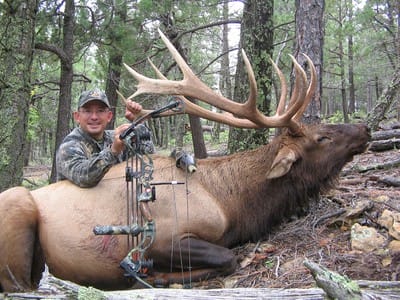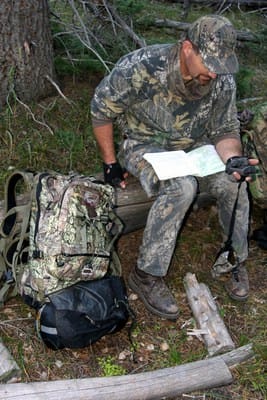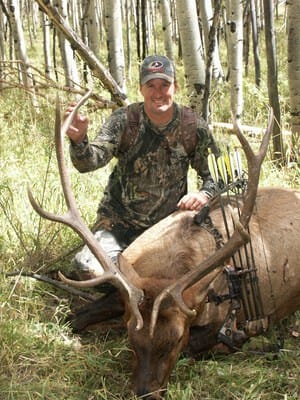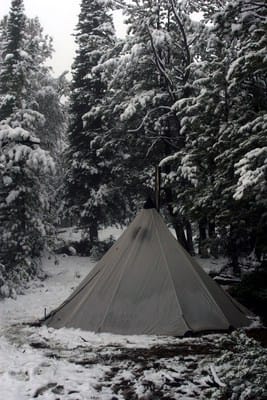
Elk hunting is something most hunters I know dream of. Unfortunately, that’s as far as many hunters take it. They dream of doing it but don’t actually do it. Anyone with a decent amount of woodsman skills, a little bit of energy and some calling ability can bag an elk on their own without the use of a guide or without spending an arm and a leg. There are a handful of western states that offer elk hunting and contain good numbers of elk. The most popular place to hunt elk is Colorado. The reasons are pretty simple since the state has a larger herd of elk than any other state, offers over-the-counter licenses to non-residents and has millions of acres of public ground on which to hunt.
The Odds are Against You
Hunting on your own in Colorado can be done for around $1,000, but remember that the Colorado success rate is less than 20 percent. If you want to hunt in Colorado, realize that the odds are against you. In order to be successful, you will have to work hard and do lots of research before leaving home. I suggest that most first-time elk hunters hunt during the rut, which is mid-September. This is when bulls are the most talkative and most responsive to calling. If you are a gun hunter, you will have to wait until October. If you prefer using a muzzleloader, your season occurs during the rut but you will need to draw a tag.
Do Your Homework
Most hunters who are consistently successful at bagging elk on their own (regardless of the state they are hunting) do a lot of online research. They determine where they want to hunt by talking with game biologists in the state they are hunting. They download topo maps and aerial photographs of the area in which they will be hunting. With modern day GPS units, you can download much of this data onto your GPS before leaving home, which makes navigating in the backcountry quite easy.

Doing lots of research and spending hours looking at maps and photos before leaving is critical. Studying the maps and photos will help hunters locate elk honey holes. When looking at maps, my friends and I usually look for areas that are a few miles off any road system so we will hunt by ourselves. We also look for water, areas that have heavy timber, remote meadows and mountaintop benches where elk can feed, water and bed without being disturbed.
Be in Shape
Knowing how to read a map and a compass is vital when hunting remote western wilderness, as is being in shape. Elk hunting can be hard on the body. I usually walk several miles a day for weeks to prepare myself for the wilderness before heading west. I also carry 40 to 50 pounds on my back to strengthen my muscles and prepare my body for hiking up and down mountains with a pack on my back. Having a good pack is a must. I personally use a Blacks Creek Canadian pack because it is super tough and can hold everything but the kitchen sink.Calling Techniques
If you’ve ever called a turkey in, you will be at home calling in elk once you have learned their language. Learning how to bugle and cow mew isn’t difficult. The hard part is learning when to bugle and mew. Like turkeys, experience will be your best teacher. The best way to call in a bull is to have at least two people working together. The first person does most of the calling while the other person is the shooter. Ralph Ramos, an experienced guide and caller from New Mexico said most hunters don’t get far enough apart.

“Most hunting buddies stay too close together,” Ramos said. “I prefer to be 100 yards behind my hunter so as the bull approaches, he thinks he is a safe distance from the elk when he is actually within shooting distance of the hunter.”
In Colorado, elk are hunted heavily and call shy. Hunters should call sparingly and as Ramos explained—if you are calling, you need to get behind the hunter. Again, like turkeys, elk love hanging up just out of shooting distance. By placing the hunter out in front of you and your buddy, you have a better chance of getting a shot, regardless if you are using a bow or a gun.
Wilderness Camping
One of the best ways to hunt for elk is to camp near your hunting area. In Colorado, you can basically set up a tent camp or camper near almost any 4×4 trail. I try to get a mile or so from any trail when setting up to get away from people and ensure a real wilderness experience.

If you plan on camping, use a high-quality lightweight tent. The weather in Colorado can change rapidly and a two- or three-season tent won’t be able to handle the wind, snow and ran that come with hunting elk in September. You also need a quality sleeping bag and top-notch boots that are broken in to prevent blisters. Nothing ends a hunt faster than having tired, cold and sore feet.
Stay Positive
Keep an upbeat attitude. Most successful elk hunters hunt as hard on the last day as they do the first. Realize before you go that elk hunting is tough, a lot tougher than hunting for whitetails. When things go wrong, you need to stay upbeat and realize that it only takes a second to turn a bad hunt into a successful one.
Like turkey hunting, one moment the woods can be silent and next thing you know, after walking over the next ridge you’ll find yourself listening to a screaming bull. Nothing compares to hunting elk in the western wilderness. Regardless if you go home with an elk or not, hearing an elk bugling at 10,000 feet is priceless.
To learn more about the author visit www.tracybreen.com.



